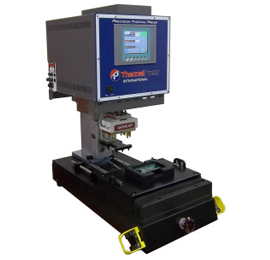
USP Class VI Medical Packaging – How to Ensure Compliance when Heat Sealing
When it comes to regulatory compliance, medical devices are in a league of their own.
Since lives are routinely on the line, manufacturers of medical devices have to plan for every possible use case scenario and create products that address those situations.
This means that before manufacturing even the simplest medical device, you need to carefully define the situations and environments it is to be used in. Then, you have to ensure that even in the case of product failure, the risk of endangering lives is as small as possible.
To this end, the U.S. Pharmacopeial Convention (USP) established a series of requirements for pharmaceuticals and medical products since its founding in 1820.
Today, the USP has expanded its influence worldwide, mostly through agreements with other national regulatory bodies of the same time.
The annual pharmacopeia itself contains thousands of monographs describing various chemicals, testing procedures, and standards. The chapters that medical device manufacturers are most interested in are numbered 87 and 88.
USP Class VI Medical Packaging Requirements
Chapters 87 and 88 describe procedures for testing and evaluation polymeric materials and medical devices. The focus of these tests is determining the biological reactivity of the material.
In order to mass produce a device intended for humans to wear on a constant basis, like a blood sugar monitor for diabetics, manufactures have to ensure that the materials are safe.
The USP classifies plastics into six categories based on the biological reactions they cause under controlled laboratory conditions.
Class VI is the most extensive testing requirement, consisting of three in vivo reactivity evaluations:
- Acute System Toxicity. This test measures irritation that occurs when a sample is administered orally or applied to the skin.
- Intracutaneous Test. This test measures irritation when a sample contacts live tissue after an incision.
- Implantation Test. This test measures the toxicity of a sample after intramuscular implant.
Following these three tests, researchers subject the material to temperature assessments, determining if it can withstand temperatures of up to 250° F. If the material passes all of the tests, it is deemed safe for use in and around the human body.
How Do Heat Seals Fit In?
Medical devices designed for implant or constant wear need to be made of Class VI-compliant materials. As a manufacturer of medical devices, responsibility for ensuring USP compliance falls on you, so choosing qualified equipment and service vendors is crucial.
This applies to heat sealing thermoplastics the same way it applies to medical cabling, wires, and product shells.
One of the most common mistakes manufacturers make is assuming that because a particular vendor sells Class VI-compliant materials, all their products are compliant – this isn’t true.
When purchasing equipment and materials for creating Class VI medical packaging, you should always ask for product-specific certification – even for trusted vendors with whom you have worked for years. Compliance guidelines can change from year to year, as can individual material compositions, and in the medical industry, it’s better to be safe than sorry.